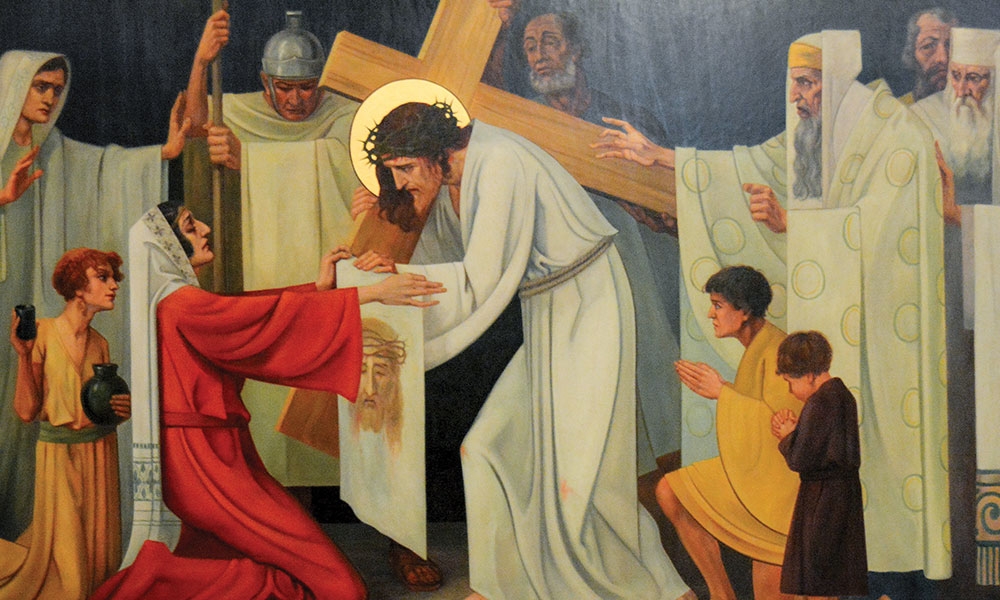
The Way of the Cross: Offering sacred presence in moments of suffering
When I was younger, I had grand plans to save the world. I wanted to smuggle Bibles into places they were banned and care for whole countries in need, like Mother Teresa. I thought that doing daring and adventurous things were what it really meant to follow Jesus.
When I was younger, I had grand plans to save the world. I wanted to smuggle Bibles into places they were banned and care for whole countries in need, like Mother Teresa. I thought that doing daring and adventurous things were what it really meant to follow Jesus.
However, as I grew older, I gradually realized that following Christ will take some people to foreign lands or place them in charge of large communities, but that isn’t always the case. For most of us, the first call will come in the form of loving those we are closest to. We’ll encounter Christ in the day to day care of young children who need regular attention or in the suffering of a neighbor who is overwhelmed by crisis. We’ll meet Jesus again and again in needs that can seem endless with no clear solutions.
My work in mental health means that I regularly encounter individuals who are cared for by family and friends who walk beside them through valleys and mountains that feel impossible to scale. I see firsthand the role of community agencies and charities that exist to help and with nothing expected in return. As a helper who arrives to work daily with people whose circumstances exceed their ability to cope alone, my ultimate hope lies in Christ’s promise to make all things new and “wipe every tear from their eyes, and there shall be no more death or mourning, wailing or pain” (Rev 21:4-5).
But what about here and now?
Christian tradition offers us the Stations of the Cross — 14 moments in Jesus’ salvation journey for our consideration and meditation. I admit that as a kid I found this devotion hard. It was long; there was lots of kneeling and standing; there were never doughnuts afterward. However, as an adult, I’ve found consolation in the opportunity to make this journey during the season of Lent.
There’s consolation to be found in every station, but I think the sixth station — when Veronica wipes the face of Jesus — is especially helpful when we are searching for meaning in the midst of difficult seasons. Being present can feel like it’s not enough when we are sitting with someone who is facing suffering beyond anything we can do. But that’s what this station shows us. Veronica continued to follow Christ when the suffering he was experiencing caused others to look away or flee and when it appeared there was little she could do to stop what was unfolding.
In the midst of this, she wipes the face of her Lord with a cloth. It doesn’t change that Christ will ultimately be crucified. It doesn’t stop what must have been agonizing pain. However, in her willingness to be present at Christ’s suffering, she is given his image on her cloth.
This is the journey of Lent that culminates in the passion of Christ. We gain new insight into how Christ loved us — “becoming obedient to death, even death on a cross” (Phil 2:8).
Doing big and daring things is thrilling and at some point I hope everyone has the opportunity to travel overseas on a mission or build a home for someone in need. The witness of St. Veronica on the way of the cross offers us an example for the difficult moments, ones that seem more numerous in our lives, when need seems to be unending, and there are no clear solutions.
It is in those moments, when all we can offer is our presence and compassion, that we truly encounter and receive the image of Christ — his love for us, and his invitation to love one another.
Alison Blanchet, LMHC, lives in Panama City with her husband and three children. She works as a therapist for children and teens. Email her at alisondblanchet@gmail.com.



